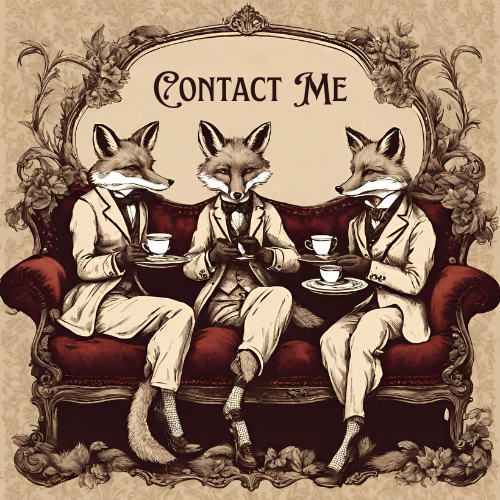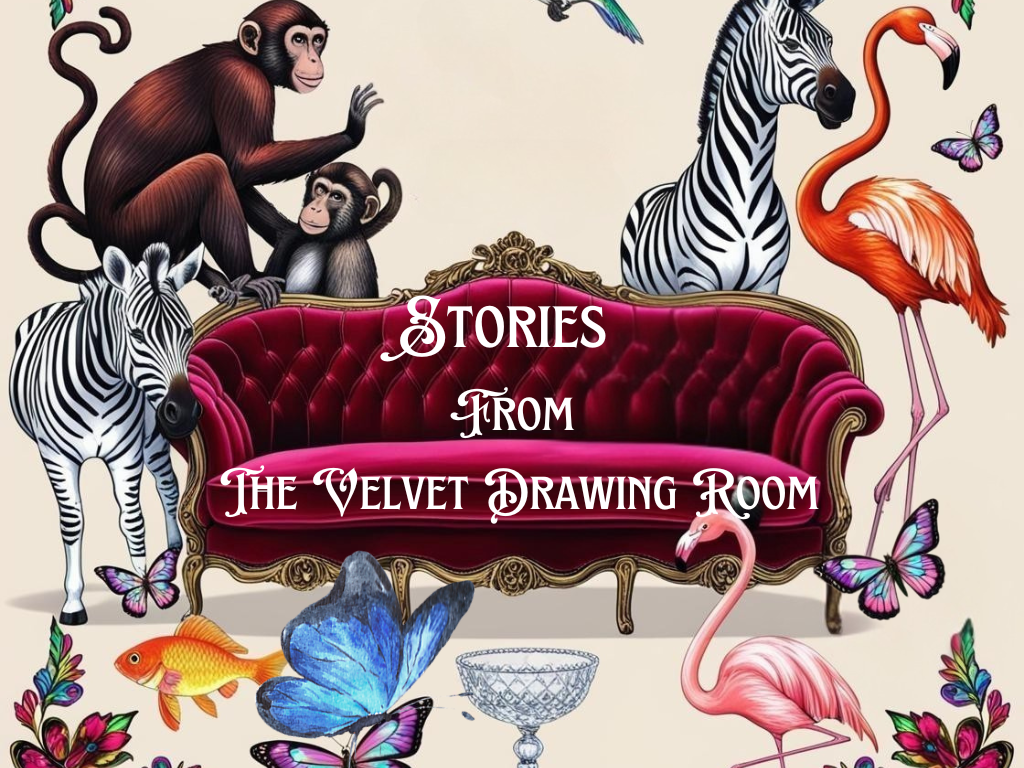A.J. Harris (b.1867 d. 1936) Victorian Taxidermist, apprentice of Swaisland Brighton and E.F. Spicer Birmingham
Victorian Taxidermist AJ Harris of Enfield (b. 1867 d. 1936)
A.J. Harris (b. 1867 d. 1936) carved out a living as a taxidermist and a cycle maker, and spent most of his adult life working alongside his brother, Walter. They shared shop premises in Enfield during the late 1800s and also later in Buntingford after the turn of the 19th century. He has a fairly low profile for collectors and enthusiasts but there’s just something about him that interests me!
I was delighted recently when Peter Southon, lifelong taxidermy enthusiast, collector, and nature lover, contacted me when he saw my article about the beautiful cased fox by A.J. Harris, and we swapped notes and talked about a shared interest in the history of this Victorian taxidermist.
Peter Southon was born in Enfield and has always had an interest in taxidermy. At the age of 13yrs, without referring to any books or having any training, he stuffed an eel just to see how it worked!
A.J. Harris of Enfield, naturalist and taxidermist, has interested Peter for years, since the location of Enfield was their shared residential connection, and over a long period of time Peter was compelled to try to find out more about him and his work, which is not often seen for sale on the market, but says that apart from the cased fox in my possession, he has seen that there was a sale of a Pike mounted by Arthur J. Harris in 1906 at Baker St, Enfield, at a Sworder’s auction in 2010.
Unfortunately, the image of the auction lot is no longer available.

photo: Peter Southon
The grave of Arthur James Harris is at Layston, Herts, UK
In 2013, Peter found the grave of A.J. Harris and his wife, Alice who were buried together at Layston churchyard within the grounds of Layston church which has since become a private residence.
Layston is in the neighbourhood just 1 mile out of Buntingford where Arthur and Alice Harris settled after having moved from Enfield in around 1906.
The grave site at Layston Churchyard in 2013 was almost totally overgrown so Peter cleared away the shrubs and undergrowth to reveal the simple grave with the names of Arthur and his wife, Alice. A toad and a robin appeared and kept him company while he was clearing it. Peter has made three more visits to clear and clean up the grave site since then, once in 2018 and then again in 2021 and most recently in September 2024.
Interestingly, there is another connection between Peter and Arthur J Harris outside of the shared geography of Enfield, as Peter’s mother and father were also named Arthur and Alice.

photo: The two Harris brothers outside their shop in Buntingford sometime after 1906. Arthur James Harris, Taxidermist, is on the right, wearing the hat with the steps behind him


A shared enterprise
Harris & Harris – Taxidermists and Cycle Makers
After sharing his notes with me, I took some of Peter’s information and started to look into the lives of Arthur James Harris and his family, and we now have a family tree which has allowed us to understand in more detail the life and times of this lost Victorian artist.
Arthur J. Harris Taxidermist and Naturalist was born in 1867 in Hampstead to John and Emma Harris and was the eldest of three boys. His brothers were Percival (b. 1866) and Walter (b. 1870).
It appears that Arthur was close to his youngest brother, Walter and they appear to have lived and worked together for most of their adult lives.
In a newspaper article dated 1894 in my first blog post we see that they are mentioned as living together in Baker Street, Enfield where Arthur made his taxidermy, but the shop was owned by his brother Walter, who made and sold cycles.
Peter tells me that the business was known both in Enfield then later in Buntingford as “Harris & Harris Cycle Makers” and later “The Harrier, Cycle and Engineering Works” and an advert found in the Middlesex Gazette dated 1895 bears witness to this. Later on the 1911 census Arthur describes his profession as “Taxidermist and Cycle Maker”.
Peter also supplied me with a photo of this invoice showing the two Harris brothers in 1898. Headed “The Harrier Cycle Works” in Buntingford, Herts and Enfield, Middlesex. So they had two shops running in parallel at this time.
Walter Harris is the Engineer, and his brother Arthur J. Harris is the original Naturalist.
The invoice is signed by J Harris, and it is likely that Arthur goes by the name of James, or that their father, also named A.J. Harris, is helping out in the shop, but that he is known as “J. Harris” to differentiate between them. Just an unproven theory, but likely, since their father lived with Arthur J. Harris above the shop at Baker Street, Enfield.

Putting a face to the name of A.J. Harris
An image of A.J. Harris
This photocopied image from a newspaper was originally in the possession of the granddaughter of Arthur J. Harris. It was obtained from a friend who had met the granddaughter, by Peter Southon, and I am delighted to share it here.
We also see that A.J. Harris had a sense of humour because the photo shows him having fun with a pair of glass eyes for a tiger placed over his own!
We now also have an image of his wife, Alice.
They would be amazed that we’ve traced all this information about them, wouldn’t they? Wonder how they would feel about it?
A Taxidermy Training
A.J. Harris was born in Hampstead and his father was a gardener. They moved out of central London sometime after 1871 and in 1881 the census shows Arthur’s family had moved to Essex. It is recorded on that census that Arthur was a scholar until the age of 14. In those days you had to be from a middle class family if you were a scholar, otherwise the family sent the children out to work in order to survive.
Since Arthur’s father was a Gardener by trade it’s not unlikely that the young Arthur developed knowledge of the countryside and wildlife, and its highly likely that some essential practical skills that he would put to good use for his future as a taxidermist and naturalist were handed down to him from his father.
The family lived and worked at Trueloves Garden, Ingatestone, Chelmsford, Essex which was part of the Historic Manor House, Truelove House. The census for that year shows there was a large domestic staff there including butlers, footmen, grooms and lady’s maids. In that census we see the whole Harris family recorded and we can imagine a picture of an “Upstairs Downstairs” type of scene which A.J. Harris and his family were an important part of.
Truelove House is a listed Grade II Victorian neo-Gothic Victorian Manor House designed by William White, and in 2024 the major part of the house was sold on the open market for £2.3M. It is described on the website of Historic England as part of Trueloves Grange. What a grand and privileged beginning to Arthur’s career.
Apprenticeship at Swaisland and E.F. Spicer
The apprenticeship of Arthur J. Harris as a naturalist and taxidermist would have begun around 1881 or 1882 after he left school and left Ingatestone at age 14yrs . He initially went to work as an apprentice at Swaisland in Brighton (according to the death notice printed in 1936), and then for E.F. Spicer in Birmingham, the cousin of the famous Peter Spicer.
Who knows how the connection for the apprenticeship between Harris and E.F. Spicer happened. It could simply have been that the young Arthur J. Harris replied to an advertisement for an apprentice; on the other hand there may have been some influence or a favour or two made for the young boy by someone with connections at Trueloves House or at Swaisland of Brighton “who knew someone”. We shall never know, but this is fascinating to me; to be able to trace the life of a naturalist/artist who lived in the Victorian era, born about 100 years before I was, and to whom I was metaphorically introduced after I fell in love with a cased fox.
Normally, apprenticeships lasted 7 years, and this seems to make sense in this case, because by 1891 Arthur J. Harris is recorded on the census as being 24 years old and living at 42 Baker Street, Enfield together with his parents and his brother, Walter.
The Baker Street address is on the label of the fox in the case, so we can surmise that Arthur J. Harris left Spicer in about 1889 aged about 21 yrs after having served a 7 year apprenticeship which began in about 1882. He appears to have quickly established his own business and in 1893 we see him living and working with his brother, Walter, and advertising for an apprentice of his own. It’s possible that his apprentice was Joseph John Ball (who was about ten years older than himself) and the newspaper article of 1894 shows that if so, it didn’t appear to be successful, since Mr Ball, also a lodger at their premises in Baker Street unfortunately appears to have been a drunk!
The 1st World War and the end of the taxidermy business
In 1906 Arthur J. Harris and his wife, Alice and their three children, had moved out of Enfield to High Street, Buntingford.
In 1914 the 1st world war happened and Arthur J Harris was, at the age of 47, too old to be called up, since the age limit was 41. Thankfully his four sons were also spared because between 1914-1918 they were all still too young.
The demand for taxidermy had dropped off in around 1910, even before the war started, and the family could not escape the decimation of the social and economic landscape that the first world war had bequeathed . By 1921 the census shows that Arthur was no longer working as a naturalist and taxidermist, but was now working as a general labourer. It was a case of taking any work that was available.
Arthur died suddenly in March 1936 at just 68 years old in Buntingford and was buried at Layston. His wife, Alice, died 14 years later in 1950 and was buried with him. There he lay for over 70 years, widely unacknowledged except by his family, and the robin and the toad that Peter discovered when he cleared the grave site.
There is the briefest of mentions of Arthur James Harris of Enfield by Christopher Frost in his book published in 1987 “A History of Taxidermy” in which Harris is mentioned (incorrectly due to a typo, as A.H. Harris of Enfield) as having prepared some really attractive cases of waterside birds, but that his work was rare to find. So, until I came into possession of his cased fox in 2008, and until Peter tried to find out more about a fellow who had lived in the same town, and whose grave he discovered in 2013 the story of A.J. Harris of Enfield was unknown.
I WONDER
Imagine what Arthur J Harris, Taxidermist and Naturalist, and apprentice to Swaisland of Brighton, and E.F. Spicer of Birmingham, would say if he knew that so many years later people were talking about him and collecting his work?
I wonder what he would have thought of the internet, which has allowed us to do this?
Amazing isn’t it?
Discover more from thevelvetdrawingroom.co.uk
Subscribe to get the latest posts sent to your email.




















